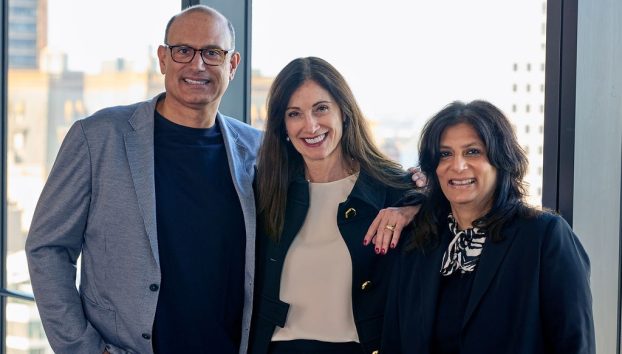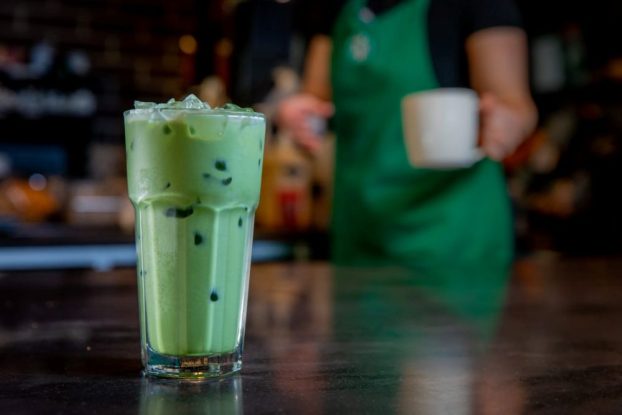
This story originally appeared in the November/December 2019 issue of strategy
Isaac Carasso began peddling his milk and yeast product (or yogurt, as we know it today) as a digestive aid in pharmacies in Barcelona more than a century ago. He established a small factory 100 years ago in 1919 and by 1929, his modest business – named Danone after his young son Daniel – had expanded from Spain to France. He sold his yogurt in small ceramic jars in Paris, a city more consumed by cinema and nascent surrealism than by Balkan desserts.
Meanwhile, in 1928, Quebec-born Jude Delisle had discovered yogurt during a trip to Paris. Upon his return home, Delisle began playing with lactic ferments and produced small batches of his own yogurt in a makeshift shop on Montreal’s Rue Duluth. Production scaled from 20 to 4,000 jars per day, out of which the company, Delisle Foods, was born. Much later in 1993, The Danone Group purchased Delisle, rebranding the yogurt business to become Danone Canada in 1997.
Dan Magliocco, president and CEO at Danone Canada says that when the company came to Canada it had the muscle of a global organization and was beginning to accelerate the growth of what are now household names, Activia and Oikos. The company is now a $40 billion dollar global juggernaut. Its portfolio also includes DanActive, Danino, Danette, YoCrunch, Silk and So Delicious.
In Canada, Danone operates from two headquarters, one in Boucherville, Quebec, and another in Mississauga, Ont., with a marketing department made up of almost 30 people. The company’s domestic competitors include General Mills’ Liberté and Yoplait, and Parmalat’s Astro and Siggi. According to Nielsen, Danone Canada holds a 37% share in yogurt, a 50% share in plant-based beverages, and a 71% share in coffee creamers.
The yogurt boom

Danone’s first advertising slogan was “the right dessert for happy healthy digestion.” The challenge in building the category during those early days, says Magliocco, was getting consumers on board with eating yogurt throughout the day instead of simply for dessert, as well as adapting the naturally sour flavour to meet a North American palate. The latter was something Carasso’s son was able to accomplish from his home base of New York City in the 1940s, when his company added fruit to the bottom, and therefore sweetness.
The treat’s popularity really took off in the ‘60s, and the product – frequently associated as a food for toddlers – became an on-the-go snack for any occasion and any consumer. The benefits from its bacterial culture were marketed first as “probiotics” and later as ingredients that facilitate “general gut health.”
Today, with consumer health trends skewing towards more natural foods, the company is hoping its “free from” yogurt grows to become the new probiotics.
In February, Danone launched its first flavoured yogurt made with wholly natural ingredients and no added sugar or artificial sweeteners. According to Magliocco, the 100% natural variety is a “manifestation of what we believe the future of food should be, relying on what nature gave us – milk, ferment and fruit and no added sugar.” He adds that the brand is educating the consumer around the product taste (which is, naturally, not as sweet as other yogurts) via a campaign dubbed “Revolution.” Created by Taxi with media led by Wavemaker, advertising highlights the ingredients and cheekily compares the new product to technological innovations like the moon landing and the lightbulb.
For Danino, a drinkable yogurt aimed at kids, Magliocco says the brand also “took a bold step to change the game, taking the sugar down by 40%.” Adapting to consumer trends involves “constant vigilance around anticipating the needs of the consumer and bringing unique products to the table to build categories versus stealing share,” he says.
One of those category leaders is Activia, introduced in 1987 by Danone and now available on five continents.
Jeremy Oxley, VP of marketing, insights and strategy at Danone Canada, says Activia’s popularity springs from the company staying true to its probiotic roots and health benefits. The brand was one of the first to educate consumers on what probiotics were, says Oxley. “Now the shift is talking about overall gut health in their day-to-day life, moving up the ladder to show what functional benefits are actually being delivered.”

The next wave
When the brand first entered the market, there were only a handful of players competing in the yogurt space.
But today the company is more than just yogurt.
In 2017, Danone bought WhiteWave in a deal worth more than US$10 billion. The “purpose-driven” company is focused on plant-based foods and beverages, organic produce, wholesome dairy products and coffee creamers. The acquisition brought the likes of Silk plant-based foods and beverages, Earthbound Farm organic produce, as well as So Delicious nut milk and yogurt into Danone’s fold. Today, its brands produce more than 300 dairy and plant-based products in Canada.
It was a pivotal moment for a company that recognized the earth had shifted under its feet, Magliocco says. Danone had witnessed a growing trend of small, nimble competitors entering the category, so the company upped its innovation game, developing products and quickly bringing them to market, says Oxley.
He says the plant-based beverage category grew from soy milk and quickly merged into almond. Today, cashew, coconut and oat continue to drive innovation. Oxley says the category is growing steadily, with the Silk brand, for example, having penetrated 15% of households in 2011. Now, it’s closer to 40%.
While Magliocco touts the “outstanding” taste of Silk and So Delicious, he concedes that it wasn’t always that way. Products in the plant-based beverage space have come a “long way in terms of quality and taste, even for us.”
There’s still a lot of opportunity for growth when it comes to plant-based yogurt and “lots of innovation will come from that,” he says, with Oxley adding that convenience-driven drinkable yogurt and products with high protein (like its new YoPro product from Australia) are also growth areas for Danone. In addition, the company is experimenting with different flavours and formats, such as adding mango and ginger to an Activia lactose-free probiotic drink. The day Danone stops bringing innovation to the table, says Oxley, is the day it becomes susceptible to “lowest price wins.”
The company is also innovating in the CSR sphere. Its purpose stems from decisions that “take the long-term interests of future generations into consideration,” with respect to the impact of food on consumers’ health, their communities and the environment. For example, Danone Canada is a founding sponsor of Breakfast Club of Canada, and the brand has donated more than 20 million servings of yogurt to support the non-profit and help children start their day with a balanced breakfast.
In 2018, Danone Canada achieved B Corp certification, a couple of years ahead of schedule. It is among 3,000 registered organizations that are legally required to balance purpose with profit, and is one of only a few CPG companies that sit on the list (alongside Ben & Jerry’s).
 The company has committed to making all of its packaging reusable, compostable or recyclable by the year 2025. And according to its B Corp assessment, women and/or individuals from underrepresented populations comprise of 50% of management positions. Also, 100% of management had a formal written performance evaluation in the last year that included social and environmental goals, with CEO compensation directly tied to achieving social or environmental metrics.
The company has committed to making all of its packaging reusable, compostable or recyclable by the year 2025. And according to its B Corp assessment, women and/or individuals from underrepresented populations comprise of 50% of management positions. Also, 100% of management had a formal written performance evaluation in the last year that included social and environmental goals, with CEO compensation directly tied to achieving social or environmental metrics.
The company is also showing a commitment to local Canadian farms, having partnered with a small co-op in Northern Quebec to source milk from farmers. “It becomes an element of trust for consumers as it allows us to work with farmers to build sustainable agriculture,” he says, adding that brand trust has become more important for the next wave of consumers and that they are “looking behind the wall of the trademark to pressure-test us.”
It’s these purpose-driven commitments that helped woo Magliocco to the company as a “Danoner” in 2017. “One of the reasons I came [to Danone] was the purpose-driven aspect. It’s hard to find FMG companies that have a focus on economic and social impact.”
In the past 50 years, he says the brand has had three global CEOs and they “have all been purpose-oriented, [that’s] where our mission of bringing health through food comes from.”
In 1972, then-CEO Antoine Riboud remarked to French industry leaders that “corporate responsibility doesn’t end at the factory gate or the company door.” His son Franck, who later took over the business, set up the Danone Ecosystem Fund in 2009, which supports the creation of businesses such as micro-enterprises for food distribution. Today, Danone’s global CEO Emmanuel Faber has established nine strategies anchored to UN Sustainable Development Goals, including a commitment to inspire healthier eating, as well as eco initiatives, from regenerative agriculture to circular packaging.
Magliocco says most company boards are obssessed with quarterly results, but at Danone, its sustainability commitment has not wavered. When it comes to the company’s ethos, “we don’t talk about it enough, but it is a source of pride and encouragement for the future.”























